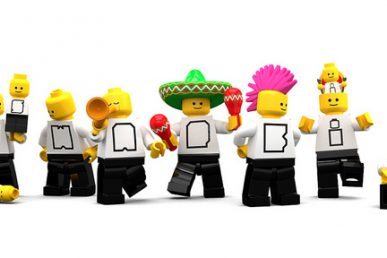Before you know it, winter will be over and the OpenStack Summit Austin will be here.
That means that it is time to polish up your presentation submission for a talk, workshop, demonstration or panel discussion about your latest cutting edge OpenStack project or demonstration of your expertise in some aspect of the platform that will be of interest to the OpenStack Community and Summit audience. All community members are encouraged to submit by the February 1 deadline; however, there are a few tips to improve the chances that your proposal gets picked. The session selection process changed this year to better ensure Summit sessions are as interesting and relevant as possible.
Here are the major changes to the submission process:
- Each speaker is limited to a maximum of three submissions, including panel participation.
- The submission forms include additional questions about how the proposed session meets the objectives of the OpenStack community.
- Speaker biographies are mandatory and should include any relevant OpenStack experience.
- Speakers are asked to provide information about past Summit presentations or other speaking examples, with links to previous presentations if possible.
- Speakers will be able to tag their proposals with keywords to help with the sorting process and ensure sessions are included in the correct track.
You can learn more about the Austin Summit submission and selection process here.
Sessions are chosen by the track chairs with input from the community at large through the general voting process. Anyone interested in volunteering to be a track chair should send a note about your area of expertise to [email protected] by January 20 to be considered for the Austin Summit.
More than ever, the emphasis is on quality and interesting content; so remember: this is your opportunity to shine and get your message out to a wider audience. Try to submit a proposal that provides as much information as possible so the track chairs and the OpenStack community have a good understanding of what you are planning to present and why it is relevant.
Here are a few tips to make your proposal stand out from the rest of the 1,500 proposals expected this year.
- No matter how wonderful you think your innovation is, purely company product pitch presentations are highly discouraged.
- Speakers are encouraged to demonstrate past experience with making presentations and speaking to large audiences. If you do not have prior speaking experience, consider participating on a panel.
- Make the proposal compelling. The community is always interested in real user stories – good and bad, new innovations and details about technical contributions to OpenStack components and of course, the platform itself.
- Provide any relevant links to additional information, such as code repositories, case studies, papers, blog posts, etc.
Before you submit your talk, make sure your abstract answers what is the problem or use case addressed by the session, what attendees should expect to learn and why this session should be selected.
More details on designing a successful OpenStack Summit submission can be found in this post taken from a Women of OpenStack video webinar hosted by Niki Acosta, Anne Gentle and Diane Mueller.
Finally, if your proposal is not accepted this time around, take heart. Come to the Summit, attend the sessions, take notes and pay attention to the ones that you particularly thought were useful and interesting. Use what you learned to hone your session proposals for the Barcelona Summit in October 2016.
See you in Austin!
Beth is a Cloud Networking Product Manager at Verizon, working on developing new cloud products and services. She has been involved in the OpenStack community since the 2010 Boston Summit, when she took the first OpenStack training class ever delivered. She then helped architect some of the earliest large deployments in the world, writing the documentation and designing the architectures as she went. That is how she came to help write the OpenStack Architecture Design Guide, to smooth the path for others so they would not break their heads on the rocks along the path. She continues to be active in the OpenStack Community with the Telco Working Group and Women of OpenStack.
Cover Photo by the OpenStack Foundation

)










